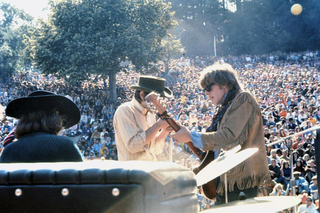
The Summer of Love was a major social phenomenon that occurred in San Francisco during the summer of 1967. As many as 100,000 people, mostly young people, hippies, beatniks, and 1960s counterculture figures, converged in San Francisco's Haight-Ashbury district and Golden Gate Park. More broadly, the Summer of Love encompassed hippie culture, spiritual awakening, hallucinogenic drugs, anti-war sentiment, and free love throughout the West Coast of the United States, and as far away as New York City. An episode of the PBS documentary series American Experience referred to the Summer of Love as "the largest migration of young people in the history of America".

A hippie, also spelled hippy, especially in British English, is someone associated with the counterculture of the 1960s, originally a youth movement that began in the United States during or around 1964 and spread to different countries around the world. The word hippie came from hipster and was used to describe beatniks who moved into New York City's Greenwich Village, San Francisco's Haight-Ashbury district, and Chicago's Old Town community. The term hippie was used in print by San Francisco writer Michael Fallon, helping popularize use of the term in the media, although the tag was seen elsewhere earlier.

Beatrice Wood was an American artist and studio potter involved in the Avant Garde movement in the United States; she founded and edited The Blind Man and Rongwrong magazines in New York City with French artist Marcel Duchamp and writer Henri-Pierre Roché in 1917. She had earlier studied art and theater in Paris, and was working in New York as an actress. She later worked at sculpture and pottery. Wood was characterized as the "Mama of Dada".
The Diggers were a radical community-action group of activists and street theatre actors operating from 1966 to 1968, based in the Haight-Ashbury neighborhood of San Francisco. Their politics have been categorized as "left-wing;" more accurately, they were "community anarchists" who blended a desire for freedom with a consciousness of the community in which they lived. The Diggers' central tenet was to be "authentic," seeking to create a society free from the dictates of money and capitalism.

Haight-Ashbury is a district of San Francisco, California, named for the intersection of Haight and Ashbury streets. It is also called The Haight and The Upper Haight. The neighborhood is known as one of the main centers of the counterculture of the 1960s.

Flower power was a slogan used during the late 1960s and early 1970s as a symbol of passive resistance and nonviolence. It is rooted in the opposition movement to the Vietnam War. The expression was coined by the American Beat poet Allen Ginsberg in 1965 as a means to transform war protests into peaceful affirmative spectacles. Hippies embraced the symbolism by dressing in clothing with embroidered flowers and vibrant colors, wearing flowers in their hair, and distributing flowers to the public, becoming known as flower children. The term later became generalized as a modern reference to the hippie movement and the so-called counterculture of drugs, psychedelic music, psychedelic art and social permissiveness.
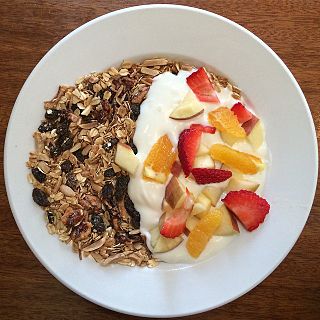
Granola is a food consisting of rolled oats, nuts, seeds, honey or other sweeteners such as brown sugar, and sometimes puffed rice, that is usually baked until crisp, toasted and golden brown. The mixture is stirred while baking to avoid burning and to maintain a loose breakfast cereal consistency. Dried fruit, such as raisins and dates, and confections such as chocolate are sometimes added. Granola is often eaten in combination with yogurt, honey, fresh fruit, milk or other forms of cereal. It also serves as a topping for various pastries, desserts or ice cream. Muesli is similar to granola, except that it is traditionally neither sweetened nor baked.
The Lower Haight is a neighborhood, sometimes referred to as Haight–Fillmore, in San Francisco, California.

American Front (AF) is a white supremacist organization founded in San Francisco, California by Bob Heick in 1984. It began as a loose organization modeled after the British National Front. Heick began working with Tom Metzger's White Aryan Resistance (WAR) in 1988.

The San Francisco sound refers to rock music performed live and recorded by San Francisco-based rock groups of the mid-1960s to early 1970s. It was associated with the counterculture community in San Francisco, particularly the Haight-Ashbury district, during these years. San Francisco is a westward-looking port city, a city that at the time was 'big enough' but not manic like New York City or spread out like Los Angeles. Hence, it could support a 'scene'. According to journalist Ed Vulliamy, "A core of Haight Ashbury bands played with each other, for each other"
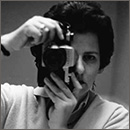
Ruth-Marion Baruch, was a German-born American photographer, remembered for her pictures of the San Francisco Bay Area in the 1960s.

William Victor Higgins was an American painter and teacher, born in Shelbyville, Indiana. At the age of fifteen, he moved to Chicago, where he studied at the Art Institute in Chicago and at the Chicago Academy of Fine Arts. In Paris he was a pupil of Robert Henri, René Menard and Lucien Simon, and when he was in Munich he studied with Hans von Hayek. He was an associate of the National Academy of Design. Higgins moved to Taos, New Mexico in 1913 and joined the Taos Society of Artists in 1917. In 1923 he was on the founding board of the Harwood Foundation with Elizabeth (Lucy) Harwood and Bert Phillips.
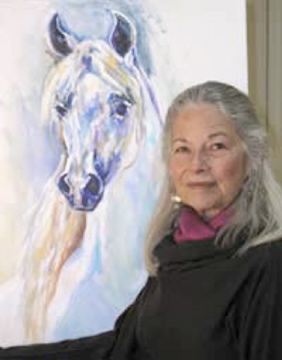
Paulette Frankl is an American courtroom artist and author.
Pirkle Jones was an American documentary photographer and educator.

The Booksmith is an independent bookstore located in the Haight Ashbury neighborhood of San Francisco. When first opened in October 1976, the store was located at 1746 Haight Street, below the former I-Beam nightclub. In 1985, the store moved to 1644 Haight Street at Belvedere, about a block and a half from the intersection of Haight and Ashbury. In 2021 the store moved down the street to 1727 Haight, the former site of its sister bookstore, the Bindery, now defunct.
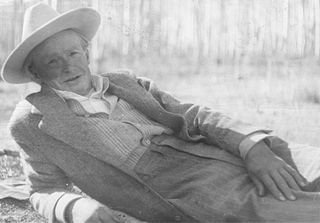
Andrew Michael Dasburg was an American modernist painter and "one of America's leading early exponents of cubism".

John Sherrill Houser was an American painter and sculptor.
Julie Kathleen Payne is an American television, film and stage actress who, in a career lasting over four decades, has specialized primarily in comedy roles as well as voice acting. She was a cast member in three short-lived network sitcoms during 1983–1986, and appeared in about twenty feature films and over a hundred episodes of TV series as well as providing voices for scores of TV animated shows.

Blackburn & Snow were a folk rock duo popular early in the mid-1960s San Francisco music scene in the United States. The duo consisted of guitarist-singer Jeff Blackburn and vocalist Sherry Snow.














